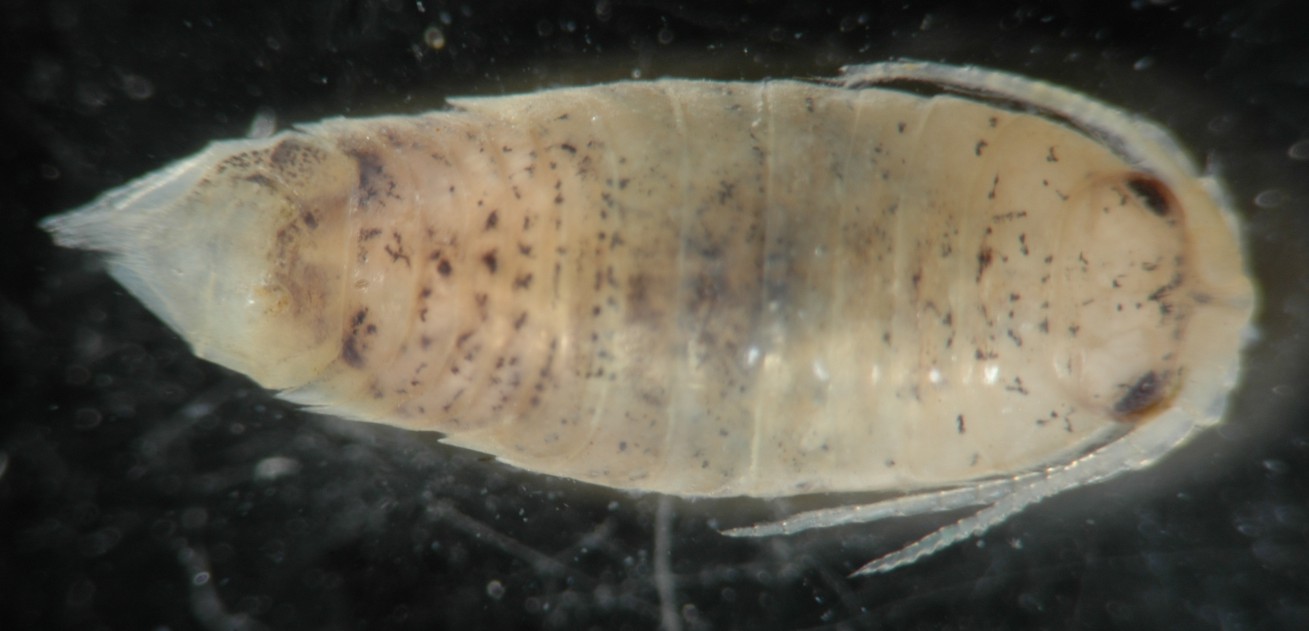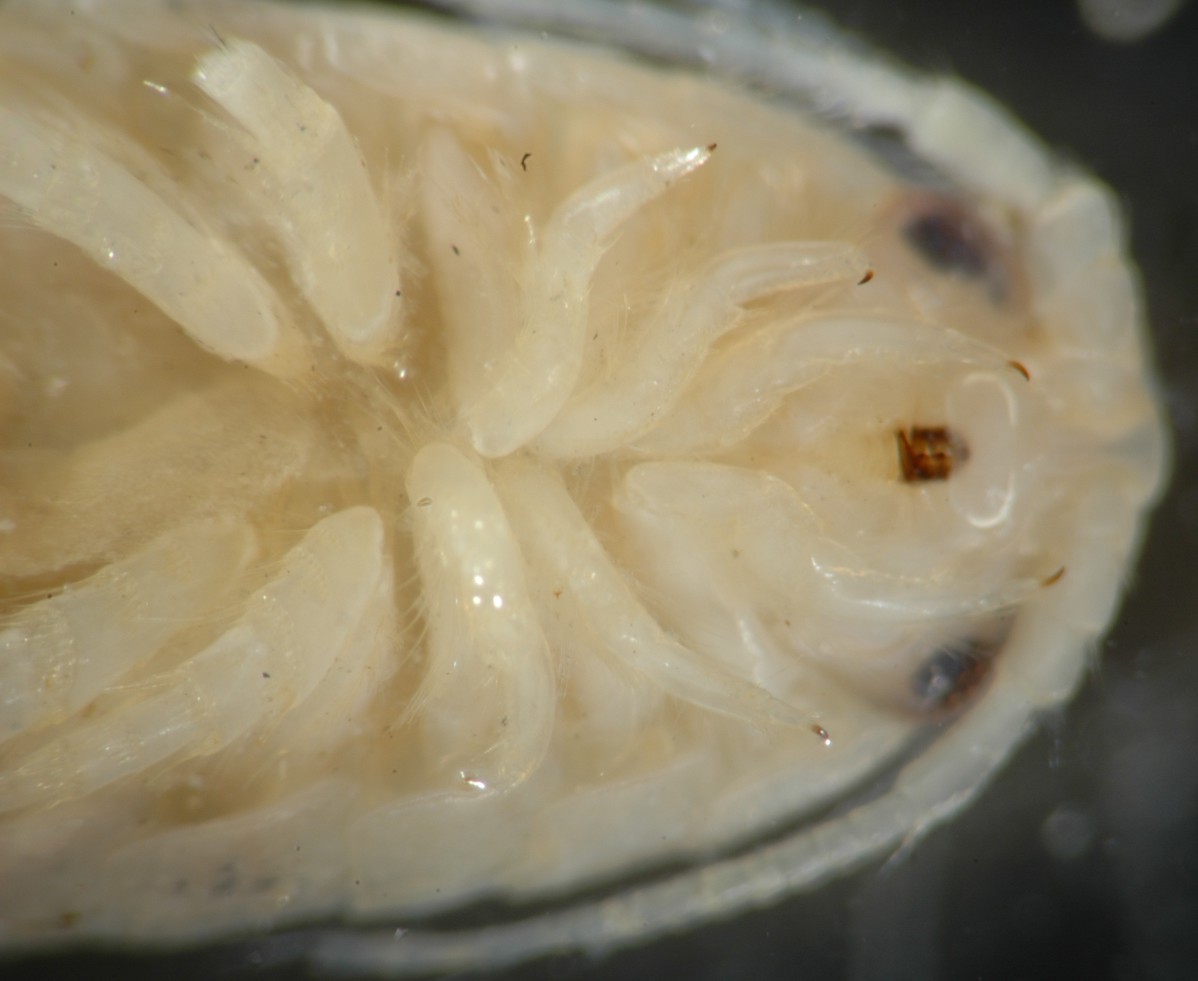How to Distinguish from Similar Species: Excirolana vancouverensis has a rounded tip on its angular telson. Excirolana linguifrons has a broadly rounded or truncate tip to the telson and reaches only 4 mm in length.
Geographical Range: British Columbia to Half Moon Bay, CA
Depth Range: Intertidal
Habitat: Sandy beaches.
Biology/Natural History: These isopods alternately bury themselves in the sand and actively forage for dead animal matter. They seem to be especially active in the shallow swash of retreating waves on sandy beaches. Large numbers may quickly congregate around an animal carcass that washes in on a sandy beach while it is still in the water, and quickly strip the carcass of flesh. This is the most common Excirolana species along the Washington coast. Predators include sanderlings.
Note: Very few crustaceans will actually bite you
but this nasty
little creature is definitely one of them. Barefoot waders in
an
area with Excirolana
will
find that the animals quickly swim toward and swarm over bare feet,
biting
them so hard that blood will be flowing within moments. Since
the
animals are so small the bites are tiny but painful like a pin prick,
and
the animals are often present in swarms of thousands. Rapidly
shuffling
the feet reduces but does not eliminate the number of bites.
They specialize in the "swash zone" of sandy beaches where the waves
swash up and down the beach slope, so if they attack you either get out
of the water or move out deeper.
| Return to: | |||
| Main Page | Alphabetic Index | Systematic Index | Glossary |
References:
Dichotomous Keys:Kozloff 1987, 1996
Smith and Carlton, 1975
General References:
Kozloff,
1993
Morris
et al., 1980
Niesen,
1997
Scientific Articles:
Web sites:
YouTube video of Excirolana "sand piranhas", sponsored by PBS
General Notes and
Observations: Locations,
abundances, unusual behaviors:
I have seen (and felt!) this species on sandy beaches of the
outer coast,
such as Kalaloch beaches, 2nd and 3rd beach, and Shi Shi beach.
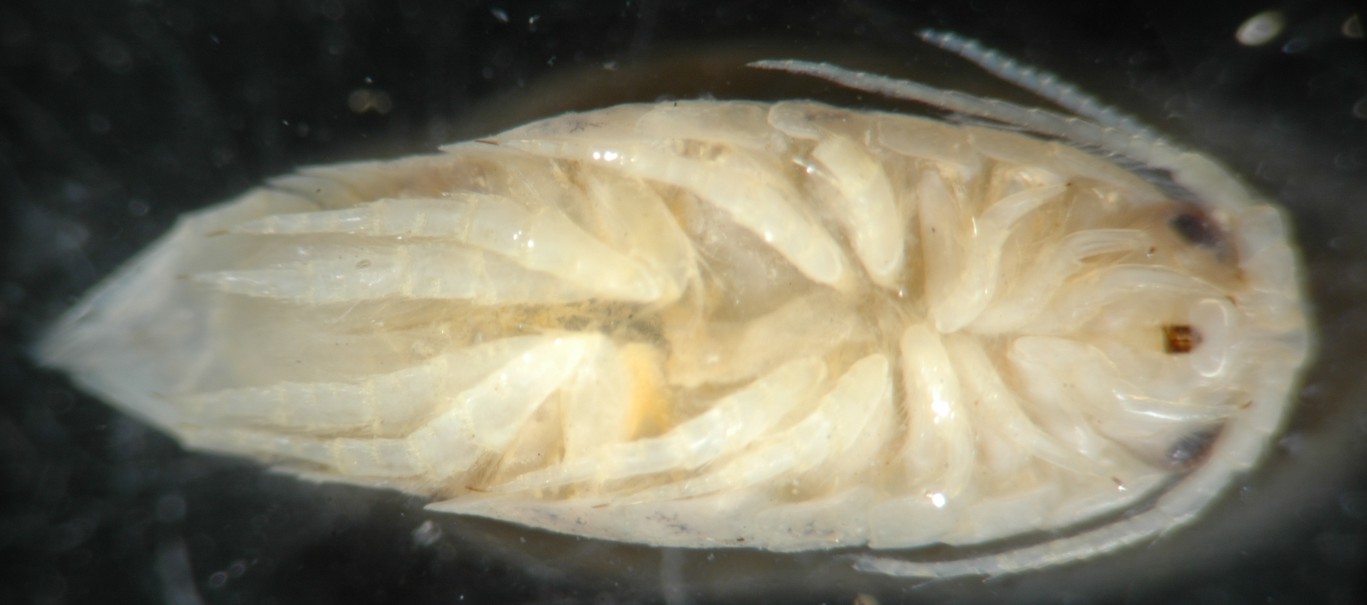
This ventral view shows that both sets of antennae are well
developed.
Some of the pereopods have small hooks on the end. The
mandibles
are dark and hardened--the better to bite you with!
This closeup ventral view of the head shows the hardened,
biting jaws
(mandibles) and the first several pereopods. The maxillae and
the
maxillipeds are light colored and lie between the mandibles and the
first
pereopods, which have small dark hooklike dactyls. The first
pereopod
is has a simple dactyl and is neither chelate nor subchelate.
Notice
that the eyes are lateral and can easily be seen from the ventral
side.
The spatulate rostrum can be seen protruding between the antennae.
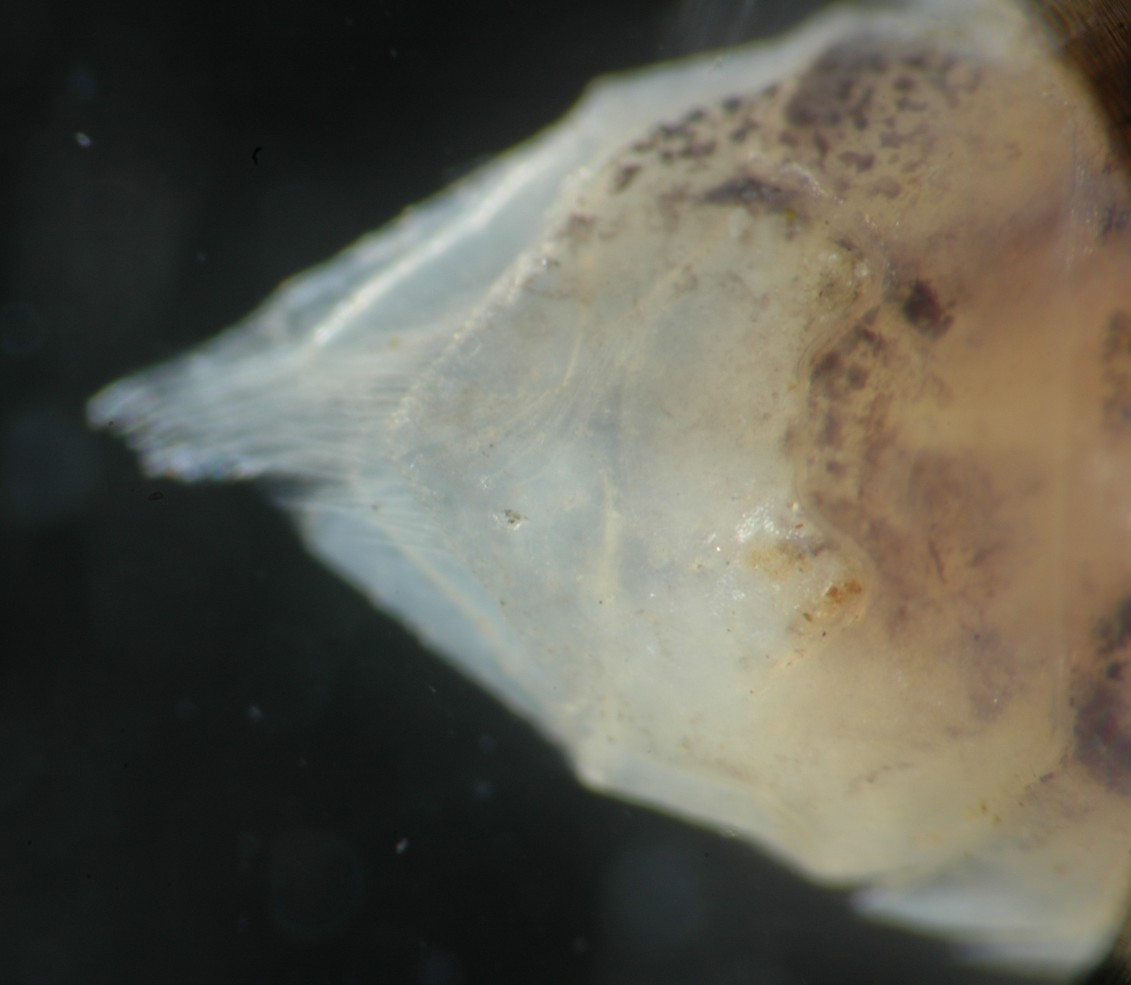
This dorsal view of the telson shows the angular but rounded tip and
the long plumose setae on the end. The outlines of the
uropods, which
are ventral and lateral to the telson, can be seen through the telson.
Notice that both rami of the uropods have flattened plates. Some of the terminal setae from the uropods are projecting beyond the telson.
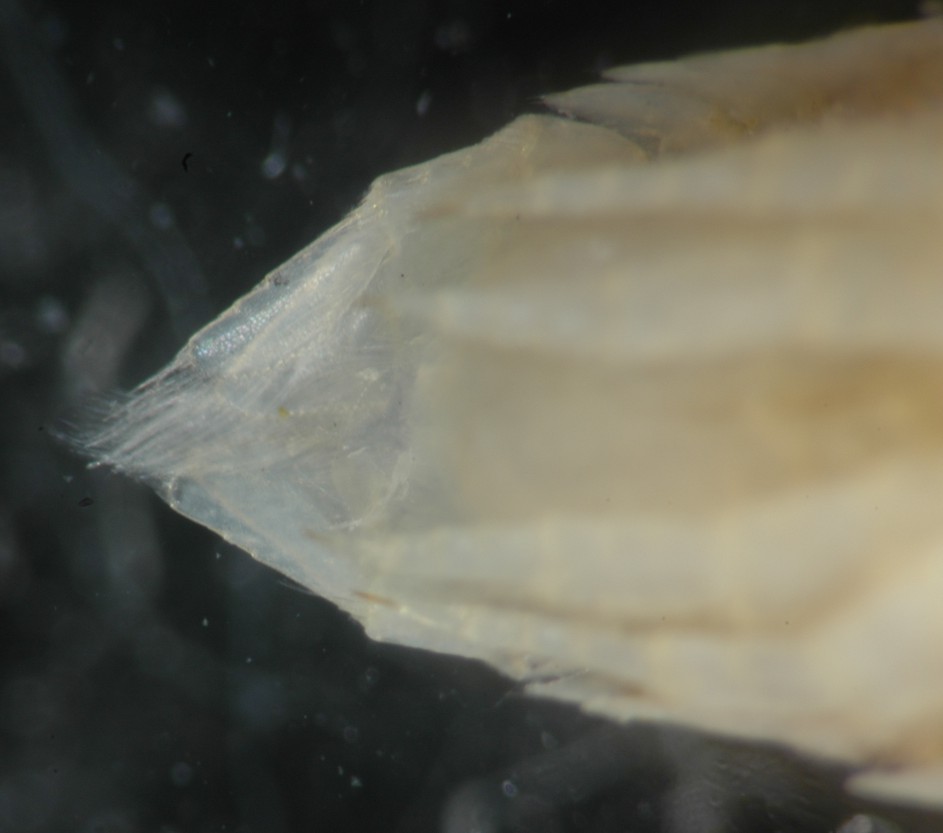
This ventral view of the telson shows the uropods, which are folded
in under the telson in this view but can extend out to the sides to
form
a tailfan.
Authors and Editors of Page:
Dave Cowles (2007): Created original page
CSS coding for page developed by Jonathan Cowles (2007)
